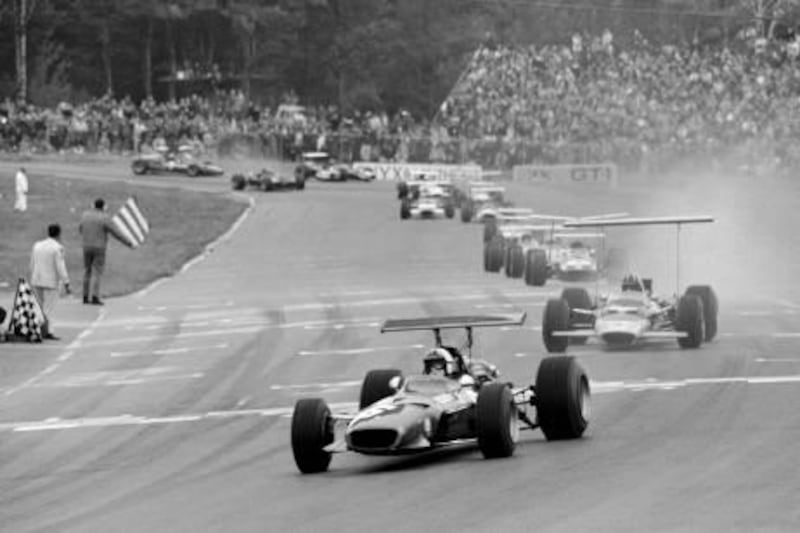It's not often I find myself in agreement with Bernie Ecclestone, the controversial/acerbic head of Formula One Management.
Nonetheless, I have to agree with him in his vehement rejection of the Fédération Internationale de l'Automobile's attempt to saddle Formula One cars with tinny little 1.6L turbocharged four-cylinder engines (subsequently revised to V6s), FIA's pathetic attempt to appear concerned about modern sensibilities, namely fuel consumption.
Ecclestone's objection is purely aesthetic - that the reduced number of cylinders and the rather limited rev ceiling proposed (15,000rpm) will dull the shriek of cars that fans have come to expect to be the fastest and therefore, the loudest. And he's right.
Though non-believers hear nothing but a din, to the diehard petrolhead, the sound of a screaming V12 is an aria sung by Pavarotti. By comparison, four low-revving cylinders is Carmen's Habanera sung by Britney Spears.
My objection, to contradict Mr Ecclestone only slightly, isn't that FIA is mandating the wrong engines, but that they should not be regulating engine design - four-cylinder, V6s, or otherwise - at all.
Innovation has long been the raison d'être of Formula One. And the engine sounds that the Formula One Management (FOM) chief laments came about because engine builders were willing to try any format and design to gain a performance advantage over their competition.
Regulations simply governed displacements (restricted for forced-air induction), but engine designers were free to determine how many and in what orientation the resulting pistons could be arranged.
Tiny French company Matras screamed because it thought (wrongly, as it turns out) that its V12 would break the Cosworth DFV's hegemony. Cosworth correctly interpreted Formula One's late-60s needs better than most in designing its V8. But that didn't stop other manufacturers from seeking alternatives.
Indeed, the list of engines that met Formula One's regulations from 1966 to '86 (allowing 3.0L naturally aspirated and 1.5L supercharged engines to compete against each other) showed the incredible diversity that comes with unfettered engineering; Renault and Ferrari ran turbocharged V6s, BMW, a similarly forced-induction inline four, Cosworth (and Repco), its aforementioned V8s, Matra, Ferrari and Honda, V12s, and there was even a bizarre H16 from BRM which, one suspects, left its English engineers out in the midday sun too long.
All that diversity - Google "BRM H16 sound" if you want to see what Mr Ecclestone is talking about - is lost no matter which engine FIA regulates in its quest for relevance in a world increasingly concerned by fuel conservation.
A better solution - one that would result in far more innovation and that sought-after "relevance" - might be to simply regulate the size of the F1's fuel tanks and let the engineers decide what manner of propulsion best solves the problem.
Since Formula One has banned mid-race refuelling, the challenge would be to make the most horsepower with the proscribed amount of fuel available.
How they made that power might actually see some of the innovation for which F1 used to be famous. Free to find the best solution - rather than merely perfect a specific design - the boffins could really be let loose and who knows what exciting developments might result.
I suspect diesels, hybrids, turbochargers, superchargers or even a combination of all of the above might vie for the winning formula.
And who cares if one manufacturer figures it all out better than the others and dominates the competition?
Would it be any worse than watching Sebastian Vettel win every race he starts?
At least the lessons those engineers learnt in racing their slot cars around the most famous racetracks in the world might actually translate into some real-world benefits for the everyday automobile that the common man drives.
As it stands, Formula One is drifting into irrelevance, with the reputed US$3 billion (Dh11bn) the sport spends each year resulting in absolutely nothing of any benefit to typical road car performance. Not the ground effects that can see an F1 Ferrari literally suck itself into the tarmac. Nor the Drag Reductions Systems that are allowing more overtaking this year. Or even the so-called "hybrid" Kinetic Energy Recovery Systems, which use an ultra-high-rpm flywheel to allow a measly 6.67 seconds of enhanced acceleration.
None of the above has any real world benefit, mainly because they are answers specific to the tightly controlled regulations Formula One has imposed.
Open the rules up so that each manufacturer is able to table a unique solution to the problem of going extremely fast while consuming as little fuel as possible and we might actually learn something of benefit to the everyday automobile. Ecclestone might even get those "vroom" engine noises he so desires.






